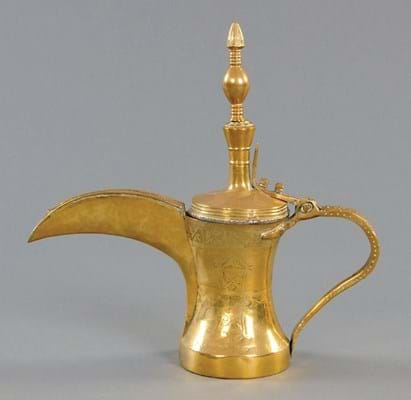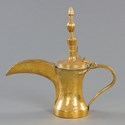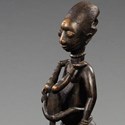From Russia came a silver cigarette case, with enamel and bejewelled decoration depicting a Russian cityscape.
Bearing the 84 Kokoshnik mark, indicating manufacture between 1908-26, and the maker’s mark HT, the 4 x 3½in (10.5 x 8.5cm) case had only very minor faults and sold above estimate to a Russian bidder at £2400 at the auction on March 20-22.
Out of Africa came a carved wood tribal figure of a man holding a child upside down. No date or area of origin of the 2ft 10in (85cm) tall piece was essayed in the catalogue, it had some chip splits with the grain and bidders were warned: “There is no firm provenance with this item.” Nevertheless, against an £80-120 estimate, it sold to a UK dealer at £1500.
Pot luck
Persia was represented by a brass dallah. These traditional Middle Eastern coffee pots appear to be increasingly popular even when of no great age.
The example on offer, 12¾in (32.5cm) tall with typically elongated spout, waisted body and stylised floral decoration, was pitched at £80-120 but sold to a Middle Eastern buyer at £2500.
Arguably the major surprise of the sale came, as so often, from China. A lot comprised Yixing blue glaze teapot, a 19th century teapot with dragon-mask handle and four polychrome side dishes with Tongzhi stamped marks. There were a few minor flaws to the Yixing teapot, including firing cracks, but against a £40-60 estimate it went to a buyer from north-east England at £2000.
Home produce also sold well. Signed by Harry Davis and featuring his trademark sheep in a mountainous landscape, an 8in (20.5cm) tall Royal Worcester twin-handled globular pot pourri and cover, date code for 1909, more than doubled its mid-estimate.
It sold to a bidder from Australia – where the market remains very strong – at £5400.


















